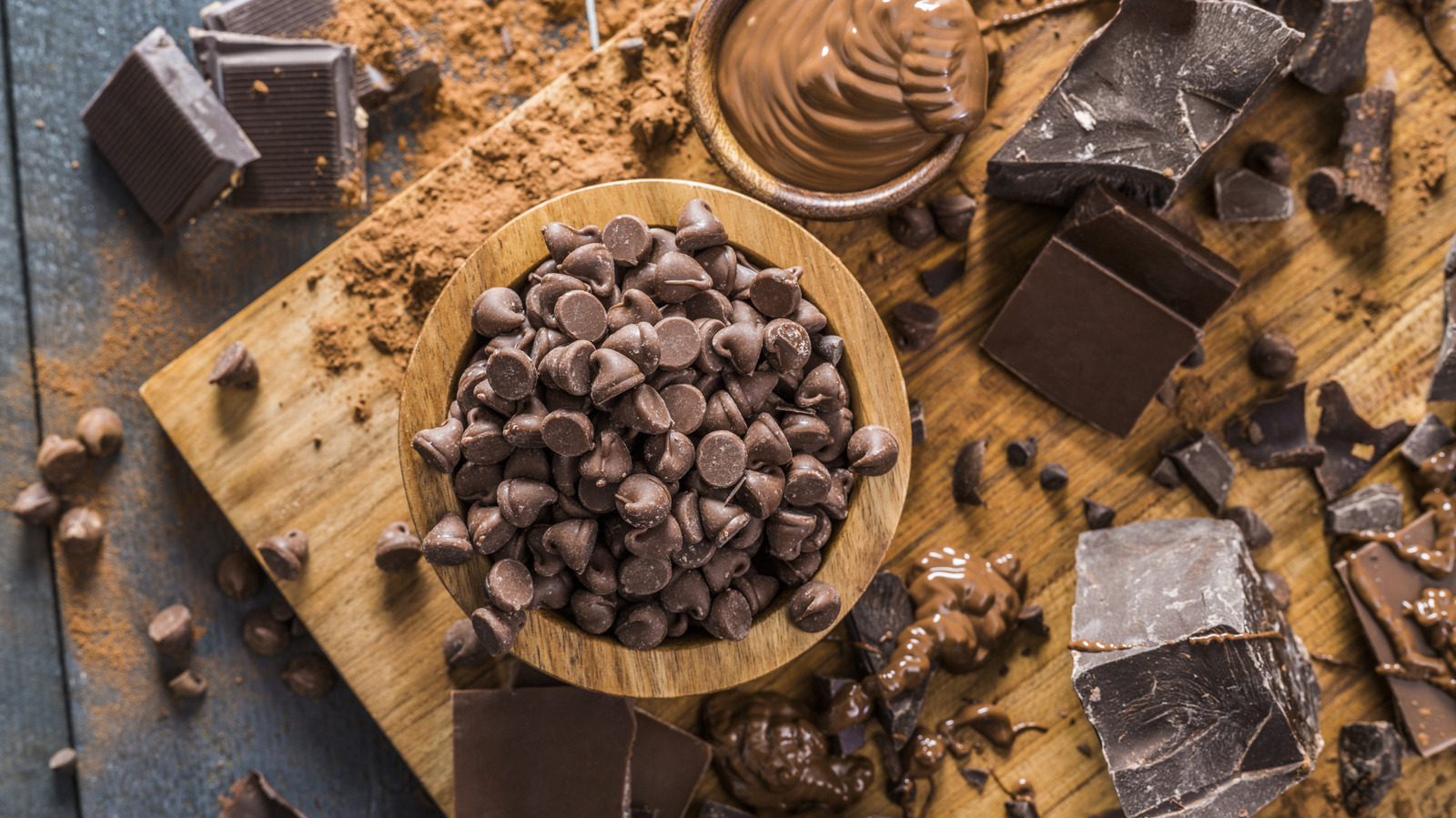
"Both semi-sweet and true dark chocolate emphasize deep cocoa tones over any palate-piquing sugariness. They also share a common ingredient base: Cocoa solids, sugar, vanilla, and an emulsifying agent like soy lecithin for that crucial, delectably creamy texture. The difference between the two comes down to percentages. During the chocolate-making process, cacao nibs (the meat inside of roasted cocoa beans) get extracted and ground into chocolate liquor. This is pure chocolate, a mixture of cocoa solids and cocoa butter, not unlike how milk is a mixture of milkfat curds and liquid whey."
"When a given chocolate bar is labelled with a cocoa percentage, it refers to how much of the bar is pure chocolate liquor. The more cocoa solids it contains, the more bitter it will taste on the palate. Also, relatedly, the more cocoa solids in any chocolate bar, the lower amounts of cocoa butter and sugar (there's simply less room in the equation for these elements)."
Semi-sweet and dark chocolate prioritize cocoa flavor over sweetness and share core ingredients: cocoa solids, sugar, vanilla, and an emulsifier like soy lecithin. Chocolate liquor forms from ground cacao nibs and combines cocoa solids with cocoa butter. Cocoa percentage on labels denotes the proportion of chocolate liquor; higher cocoa percentages increase bitterness and reduce the relative amounts of cocoa butter and sugar. Dark chocolate is a broad category that includes semi-sweet (35–65% cocoa solids, typically under 50% sugar), bittersweet (65–80%, often around 70% for balanced flavor), and true dark (80%+ without added milk solids).
Read at Tasting Table
Unable to calculate read time
Collection
[
|
...
]